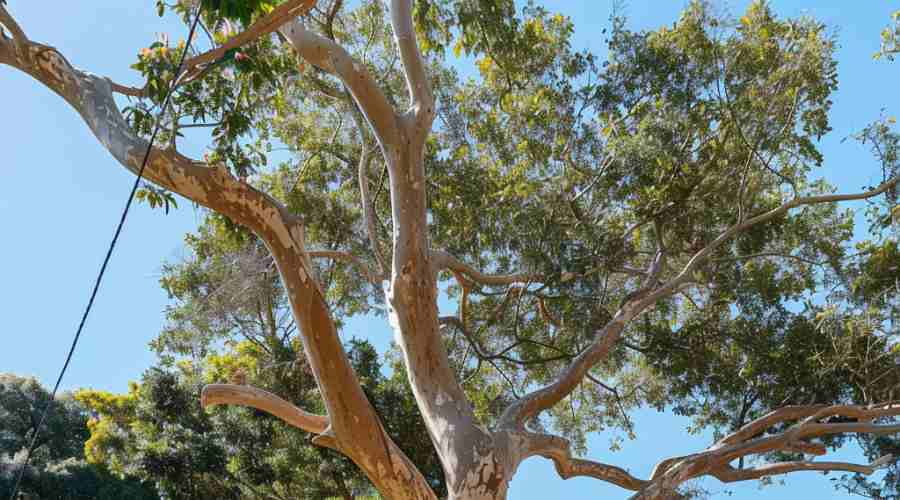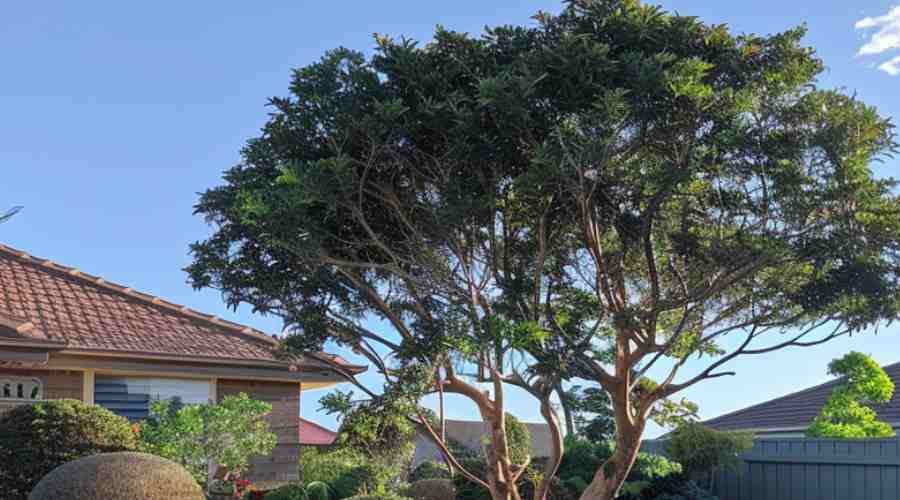Tree Pruning Vs. Tree Lopping
What’s the Difference Between Pruning and Lopping?
Have you ever walked around your garden, looked up at your trees, and wondered if they need some kind of maintenance to keep them healthy? Most homeowners want their trees to thrive, but get confused when hearing industry terms like “pruning” and “lopping.” Your first thought might be that they sound the same. But as confusing as it is, the two are very different services!
Let’s Break Down the Meaning Behind Each Term
When it comes to terminology, landscaping and gardening industries can get pretty complicated. We get why you as a property owner would be confused by what falls under pruning compared to lopping. So before we get into the real differences between them, here’s a quick definition of each so we’re on the same page:
What is Tree Pruning?
This is the more regular maintenance service of the two. It involves strategically trimming of tree branches and twigs to:
- Shape and balance growth
- Let more sunlight into the crown
- Remove damaged or diseased branches
Reputable arborists use pruning to encourage overall health and longevity in a tree. It’s done more frequently because it actively maintains growth over time.
Common Pruning Techniques
Experienced tree loppers use various pruning methods depending on your needs.
Crown lifting removes lower branches for clearance under the canopy. This makes it safer to walk underneath by raising the lowest branches.
Crown reduction trims branches to decrease the height and spread of the crown. This controls size.
Crown thinning selectively removes smaller inner branches to open up the crown. This allows better light and airflow.
What is Tree Lopping?
This service tackles more substantial tree removal when branches or even sections of the crown get too large, unsightly, or hazardous. Lopping is defined by:
- Removing entire limbs back to the trunk or main branches
- Reshaping and contouring the overall form to balance the tree
So in essence, lopping helps resize parts of your tree when it gets unruly. It modifies structural integrity and growth patterns.
Now that we know the textbook definitions, let’s look at some key ways pruning and lopping differ.
3 Major Differences Between Tree Lopping vs Pruning
| Pruning | Lopping |
|---|---|
| Done regularly for maintenance | Only as needed to reshape or reduce size |
| Removes small branches and twigs | Removes entire limbs |
| Enhances health and growth | Controls and changes growth patterns |
Purpose and Intention
The main driver behind each tree service is different. With pruning, the goal is to maintaining optimal health and balance by protecting trees against diseases and pests so they can thrive season after season. Lopping is more corrective – removing entire limbs when they get unhealthy or unruly to guide the tree’s shape.
Frequency
Pruning should be done as regular maintenance every few years. The frequency depends on the tree’s growth rate. Since lopping tackles more mature, damaged limbs, it only needs done when those issues arise – which isn’t as often.
What’s Removed
What’s cut during the process impacts the tree differently. Pruning targets smaller branches that may inhibit light or rub together. Lopping removes entire limbs down to the main branch or trunk. Pruning guides growth; lopping controls it.
Deciding Between Pruning vs Lopping Your Trees
Now you know the key differences – but when should you choose one service over the other? Here are some pointers:
Consider pruning when:
- Your tree seems stunted or uneven
- Branches are sticking out awkwardly
- Twigs and leaves block necessary sunlight
- Hazards like hangers or split branches form
Lopping is better for:
- Removing big, main limbs that altered the shape
- Parts of the crown get too tall for the space
- Limb loss or rotting creates gaps or holes
- Storm damage breaks major branches
For the healthiest and best-looking trees, I’d recommend having a qualified arborist assess your landscape’s specific needs. They can advise if pruning for tree maintenance makes more sense or if lopping for structural changes fits the bill.
Caring for Your Trees the Safe and Legal Way
Before any chainsaws come out to trim back your mature trees, it’s smart to brush up on safety and regulations. Proper pruning and lopping require special equipment and training. Trying to DIY the work can lead to mistakes that damage your trees or put people in danger.
Many towns also have specific laws around trees and the extent of trimming allowed on public or heritage. Skipping this research can lead to hefty fines down the road. Consulting local tree experts helps you avoid missteps while caring for your outdoor space.


